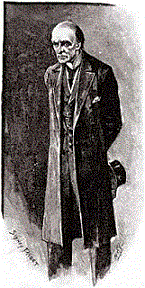ZYZZYVA
After decades with cantankerous legend (and founder) Howard Junker in the driver's seat, editor Laura Cogan and managing editor Oscar Villalon have taken the wheel at ZYZZYVA, and both the journal and website have hipper, more upscale redesigns. A subscription for this quarterly is $40 ($30 for students). As a journal spotlighting West Coast writers (CA, OR, WA, HI, & AK) since its inception in 1985, ZYZZYVA has more of a regional focus than the other two litmags on this list, and notably publishes poetry as well as fiction, non-fiction, and art. ZYZZYVA also differs in having less of a velvet rope feel to it - in fact, "first time in print," for previously unpublished writers, is a regular feature. Even so, getting one's work into this journal is far from easy. Recent high-profile contributors include Sherman Alexie, Karen Joy Fowler, Gary Soto, and Stephen Elliott.
McSweeney's Quarterly
From self-publishing success story to Baron of Quirk, Dave Eggers proves literary superstars still exist. McSweeney's now encompasses a string of national tutoring centers, several magazines, a pirate-supply store, and more, but the artistically produced quarterly literary journal is where it all started. Part of the fun of subscribing (if you're willing to spare the $55) is seeing the form in which the journal will arrive. Although the McSweeney's brand has somewhat of a reputation for disconnected hipster twee, there are some stories here that linger. The cult-classic-ish but recently cancelled "Bored to Death" HBO series began as a Jonathan Ames short story in issue 24. Other recent high-profile contributors include Jonathan Franzen, Joyce Carol Oates, Michael Chabon, and Roberto Bolaño, because who isn't publishing the great and surprisingly-prolific-postmortem Bolaño?
Like its fellow late-90s-founded litmag McSweeney's, Zoetrope: All-Story is redesigned every issue, although the issue-to-issue changes in Francis Ford Coppola's baby aren't as extreme as in Eggers's. Celebrity artists who have guest-designed All-Story include Kara Walker, Rodarte, Mikhail Baryshnakov, Guillermo del Toro, and Wayne Thiebaud. As one of Coppola's goals with the magazine was to highlight the connection between art and film, a regular feature is a reprint of a piece of literature that has been adapted to the screen. One of the slimmest litmags out there, each quarterly issue of the magazine-sized All-Story contains a handful of top-quality short stories and one-act plays with minimal advertising. US subscriptions are $24. Recent high-profile contributors include Ryu Murakami, Ethan Coen, Jim Shepard, and Philip K. Dick.











